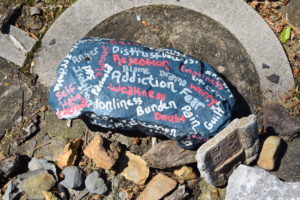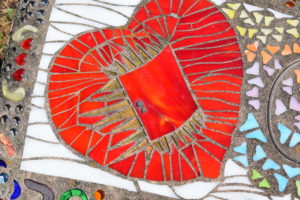Peace, love, openness, honesty – these are just a few words you’ll see painted on benches around our labyrinth on campus. But it’s not just the words, it’s how they are presented that evoke a feeling of calm and surrender.
The labyrinth was created in 2005 to help patients practice meditation and contemplation. Walking the labyrinth slows the pace of the mind and body.
While our personal labyrinth has only been around 14 years, these winding, twisting paths date back to the Neolithic Age – we’re talking 10,000 BC. Even then labyrinths were believed to have served as a tool to help one find their spiritual path by purposely removing that person from the common understanding of linear time and direction between two points. The labyrinth is not meant to frustrate those using it, rather spark a person’s discovery of their true path in life.
There are all kinds of labyrinth designs based on different cultures and religions. The labyrinth here at Cumberland Heights is a replica of the labyrinth at the Chartres Cathedral in France; inlaid in the stone floor in the year 1201.
Genie Laurent, who has been with Cumberland Heights for more than 30 years, played a crucial role getting a labyrinth on campus.
Genie says, “Labyrinths invite us to a journey of presence and meditation, to discover something about the Spirit and the self. It allows an integration of mind, body and spirit on the spiritual journey of recovery. It quiets us so that we may hear the still small voice within. Sometimes patients may experience profound spiritual experiences but most often feel a sense of peace and calm. Often patients will say ‘I felt heard.'”
In the center of our labyrinth sits a large stone with the word “Addiction” written in the middle. Surrounding that word are feelings associated with it like fear, pain, lonliness and worry.
labyrinth sits a large stone with the word “Addiction” written in the middle. Surrounding that word are feelings associated with it like fear, pain, lonliness and worry.
 Our patients are on a journey break free from addiction and the labyrinth represents the long winding road it sometimes takes to get there.
Our patients are on a journey break free from addiction and the labyrinth represents the long winding road it sometimes takes to get there.
Unlike a maze, you can’t get lost in labyrinth. It provides one continuous circuitous path that leads to the center. You can always see the center, so you don’t have to worry about where you are or if you are going the right way. It’s more of a journey of presence and meditation, an opportunity of discovery.










